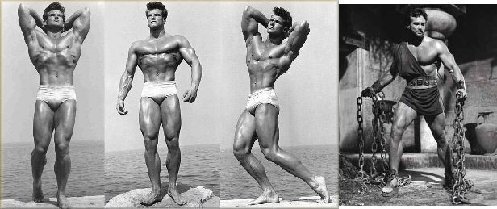A horseshoe is a product designed to protect a horse hoof from wear. Shoes are attached on the palmar surface (ground side) of the hooves, usually nailed through the insensitive hoof wall that is anatomically akin to the human toenail, although much larger and thicker. However, there are also cases where shoes are glued.
Horseshoes are available in a wide variety of materials and styles, developed for different types of horses and for the work they do. The most common materials are steel and aluminium, but specialized shoes may include use of rubber, plastic, magnesium, titanium, or copper. Steel tends to be preferred in sports in which a strong, long-wearing shoe is needed, such as polo, eventing, show jumping, and western riding events. Aluminium shoes are lighter, making them common in horse racing where a lighter shoe is desired, and often facilitate certain types of movement; they are often favored in the discipline of dressage. Some horseshoes have "caulkins", "caulks", or "calks": protrusions at the toe or heels of the shoe, or both, to provide additional traction.
The fitting of horseshoes is a professional occupation, conducted by a farrier, who specializes in the preparation of feet, assessing potential lameness issues, and fitting appropriate shoes, including remedial features where required. In some countries, such as the UK, horseshoeing is legally restricted to people with specific qualifications and experience. In others, such as the United States, where professional licensing is not legally required, professional organizations provide certification programs that publicly identify qualified individuals.
When kept as a talisman, a horseshoe is said to bring good luck. A stylized variation of the horseshoe is used for a popular throwing game, horseshoes.
History
A hipposandal, a predecessor to the horseshoeSince the early history of domestication of the horse, working animals were found to be exposed to many conditions that created breakage or excessive hoof wear. Ancient people recognized the need for the walls (and sometimes the sole) of domestic horses' hooves to have additional protection over and above any natural hardness. An early form of hoof protection was seen in ancient Asia, where horses' hooves were wrapped in rawhide, leather, or other materials for both therapeutic purposes and protection from wear. From archaeological finds in Great Britain, the Romans appeared to have attempted to protect their horses' feet with a strap-on, solid-bottomed "hipposandal" that has a slight resemblance to the modern hoof boot.
English horseshoes from the 11th to the 19th centuries Making horseshoes in India A hoof boot An oversized horseshoe for soft soil to distribute horse's weight.
Historians differ on the origin of the horseshoe. Because iron was a valuable commodity, and any worn out items were generally reforged and reused, it is difficult to locate clear archaeological evidence. Although some credit the Druids, there is no hard evidence to support this claim. In 1897 four bronze horseshoes with what are apparently nail holes were found in an Etruscan tomb dated around 400 BC. The assertion by some historians that the Romans invented the "mule shoes" sometime after 100 BC is supported by a reference by Catullus who died in 54 BC. However, these references to use of horseshoes and muleshoes in Rome may have been to the "hipposandal"—leather boots, reinforced by an iron plate, rather than to nailed horseshoes.
Existing references to the nailed shoe are relatively late, first known to have appeared around AD 900, but there may have been earlier uses given that some have been found in layers of dirt. There are no extant references to nailed horseshoes prior to the reign of Byzantine Emperor Leo VI, and by 973 occasional references to them can be found. The earliest clear written record of iron horseshoes is a reference to "crescent figured irons and their nails" in AD 910. There is very little evidence of any sort that suggests the existence of nailed-on shoes prior to AD 500 or 600, though there is a find dated to the fifth century AD of a horseshoe, complete with nails, found in the tomb of the Frankish King Childeric I at Tournai, Belgium.
Around 1000 AD, cast bronze horseshoes with nail holes became common in Europe. A design with a scalloped outer rim and six nail holes was common. According to Gordon Ward the scalloped edges were created by double punching the nail holes causing the edges to bulge. The 13th and 14th centuries brought the widespread manufacturing of iron horseshoes. By the time of the Crusades (1096–1270), horseshoes were widespread and frequently mentioned in various written sources. In that period, due to the value of iron, horseshoes were even accepted in lieu of coin to pay taxes.
By the 13th century, shoes were forged in large quantities and could be bought ready made. Hot shoeing, the process of shaping a heated horseshoe immediately before placing it on the horse, became common in the 16th century. From the need for horseshoes, the craft of blacksmithing became "one of the great staple crafts of medieval and modern times and contributed to the development of metallurgy." A treatise titled "No Foot, No Horse" was published in England in 1751.
In 1835, the first U.S. patent for a horseshoe manufacturing machine capable of making up to 60 horseshoes per hour was issued to Henry Burden. In mid-19th-century Canada, marsh horseshoes kept horses from sinking into the soft intertidal mud during dike-building. In a common design, a metal horseshoe holds a flat wooden shoe in place.
Environmental changes linked to domestication
Many changes brought about by the domestication of the horse have led to a need for shoes for numerous reasons, mostly linked to management that results in horses' hooves hardening less and being more vulnerable to injury. In the wild, a horse may travel up to 50 miles per day to obtain adequate forage. While horses in the wild cover large areas of terrain, they usually do so at relatively slow speeds, unless being chased by a predator. They also tend to live in arid steppe climates. The consequence of slow but nonstop travel in a dry climate is that horses' feet are naturally worn to a small, smooth, even, and hard state. The continual stimulation of the sole of the foot keeps it thick and hard. However, in domestication, the manner in which horses are used differ from what they would encounter in their natural environment. Domesticated horses are brought to colder and wetter areas than their ancestral habitat. These softer and heavier soils soften the hooves and make them prone to splitting, making hoof protection necessary. Consequently, it was in northern Europe that the nailed horseshoe arose in its modern form.
If you want to read more, go here: https://en.wikipedia.org/wiki/Horseshoe
- SERVES
- 6
- COOK TIME
- 30 Min
Convenience items like frozen mixed vegetables and refrigerated biscuits make this home style Chicken Cobbler Bake come together in a snap!
- 1/3 cup all-purpose flour
- 2 teaspoons salt, divided
- 1 teaspoon black pepper, divided
- 1 1/2 pound boneless, skinless chicken breasts, cut into 1/2-inch chunks
- 4 tablespoons vegetable oil, divided
- 1 onion, cut into 1-inch wedges
- 1/2 pound fresh mushrooms, sliced
- 1 (10-ounce) package frozen mixed vegetables
- 2 cups chicken broth
- 1/2 teaspoon garlic powder
- 1 (12-ounce) package refrigerated buttermilk biscuits (10-12 biscuits)
- Preheat oven to 375º. Coat a 9- x 13-inch baking dish with cooking spray. In a medium bowl, combine flour, 1 teaspoon salt, and 1/2 teaspoon black pepper; mix well. Add chicken chunks and toss until well coated.
- In a large skillet, heat 2 tablespoons oil over medium-high heat. Add chicken chunks, reserving flour mixture. Saute 3 to 4 minutes, or until chicken is slightly browned. Add remaining 2 tablespoons oil to skillet; when hot, add onions and mushrooms, and saute 4 to 5 minutes, or until vegetables are tender.
- Add remaining ingredients except biscuits; cook 3 to 4 minutes, or until heated through. Stir in reserved flour mixture and cook 1 to 2 more minutes, or until slightly thickened. Pour chicken mixture into baking dish. Place biscuits on top.
- Bake 16 to 18 minutes, or until biscuits are golden.
And births this date include...
National Hug Day or National Hugging Day occurs on January 21st and is officially recognized by the United States Copyright Office, but is not a public holiday.
Unfortunately with this horrible covid19 everywhere, hugging is not something to do.
The purpose of the day is to help everyone show more emotion in public. The only way to celebrate the day is by offering a hug to anyone and everyone you want. While National Hug Day and the Free Hugs Campaign share many similarities, there is not an association between the two.
Whether you hug a family member or a stranger, the mental and physical health benefits are the same. From the day we are born, hugs or touch improve our sleep. Hugging, like cuddling, releases oxytocin. On its own, this hormone provides tremendous health benefits. Not only does it gives us feel-good hormones, but it reduces pain. Receiving a hug helps reduce stress, lowers blood pressure, and lowers the risk of heart disease. It also eases anxiety.
HOW TO OBSERVE
Give someone a big hug. Or, if you need one, ask for a hug and reap the benefits. You can also give a mental hug. Let someone know you care by sending warm, cheerful words of encouragement to those in your circle. Boost their joy by letting them know how much they mean to you with a verbal hug until you can give them the real one.
NATIONAL HUGGING DAY HISTORY
The holiday was founded by Rev. Kevin Zaborney on March 29, 1986, in Caro, Michigan.









